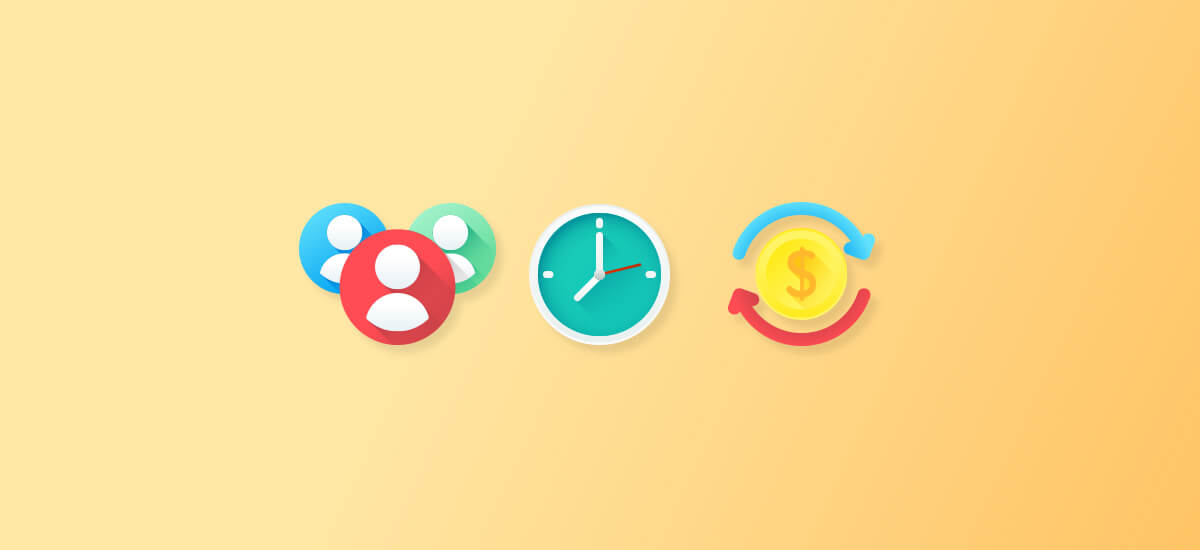Five Engagement Models that Appinventiv Offers to the Partners
No matter what industry your business belongs to or what app category you are wishing to top, 70% of every mobile app journey starts with shortlisting the agencies to outsource your app project to.
Once you shortlist a few agencies to transform your app idea into a functional app, the answer to which app development agency to finalize gets down to a selected few pointers.
The pointers or the deciding factors usually consist of the cost of the development process, the go-to-market time, and the agency’s development experience. Besides these, there is one factor that also greatly affects the choice – Engagement Model.
The answer to which engagement model does the mobile app development company follows is very crucial for determining the role that your business would play in the app development process.
And it is this cruciality that brings knowing the engagement model in the list of questions to be asked when hiring an app development agency.
The engagement model is the model that defines collaboration between a client and their service partners, which determines the level of responsibility and control.
Different app development companies follow different engagement models when it comes to detailing the relationship between the clients and themselves. This article is on the models that we follow here at Appinventiv.
When you contact us with an application development project to help develop, we give you five engagement models as options for you to choose from. These models don’t just affect the process of app development but also play a contributing role in the estimation of mobile app development cost.
Let’s get on with the engagement models’ options that we offer to our clients –
Appinventiv works with a range of different entrepreneurs and established brands from across the world. Our client base comes with a different set of needs, resources, and call for a different level of control in their relationship with us.
In order to meet the exact demands of the client in a way that their needs are fulfilled, we give them a choice of five engagement models, which defines the collaboration between them and our team.
All of these models, no matter how different, offer the same outputs – Transparency and Quality Deliverable.
Here are the Five Engagement Models that we work around at Appinventiv –
1. Fixed Cost Fixed Time Model
Under our Fixed Cost Fixed Time Model, we estimate the project after understanding its exact requirements and the time it would take for development.
After we have laid out the exact set of time and deliverables, we share a fixed cost with our clients.
Here are the benefits of the model type:
- Transparency and Predictability – The model gives you an exact deadline and budget before the process of development even starts.
- It calls for a lot less supervision and management from the clients’ front.
- From the very start of the project, you have an idea of what the app will be about.
This model is best suited for projects where it is easier to define the exact set of deliverables and which belong to the low complexity level when it comes to development. This model is known to complement the methods to expedite the mobile app development process that is followed by businesses.
2. Time and Material Model
The model is one of our most used models when we define our mobile app development process. We employ the Time & Material Model when the app belongs to medium to high-level complexity. What happens in this model is that the client is charged for the resources that we have used to develop their app, on an hourly basis.
This model is best suited for businesses which need constant updates in terms of development or design. Here are the different benefits that this model offers:
- When it comes to project scope and budget, the model allows modifications on a huge extent
- It uses Agile methodology to a full extent, thus offering a series of its linked benefits.
- Greater control on the project, especially from the developers’ front.
- Very low risk for developers and clients.
- The speedy idea-gathering stage speeds up the development as well.
3. On Site Model
Under this model, our one resource or a team of developers & designers are shifted to the client’s side for the complete duration of the project. This model is usually chosen by businesses who otherwise have a skilled team but need an expert in-house for some specific part of the app development project.
The benefit that the on-site or cost plus, as the model is usually known as are moreover same as the Time and Material billing model – It’s cost-effective, less risky, fast, and 100% transparency.
4. Hire Dedicated Team Model
In this model, businesses are given a team of developers who work especially for them and the businesses are charged for the developers’ time.
Like On-Site model, this is also best suited for the businesses who already have a team but need an expert’s skill set for some part of the project.
The only difference in the On-Site Model and Hire Dedicated Resources is that in the latter the team sits in our own office space and in the former they move to the client side.
Let us look at some of the benefits that the Dedicated Development model offers:
- High security plus IP protection
- Great control over different development aspects
- Predictable budget estimate
- Higher flexibility compared to fixed price
- A better understanding of the client’s needs, leading to a longer lasting relationship
Know how Appinventiv’s Hire Dedicated Resource Model works.
5. Offshore Development Center Model
The model is best suited for businesses that are looking for greater security levels for their app development process. What happens in this model is that we allot a separate workspace altogether with different timing and entry protocols. Also, the resources used there in terms of project management are not of Appinventiv’s but of the one that the client uses in their head office.
Basically, the ODC model can be seen as the offshore office of the client with his choice of team and development resource, process.
Choosing one out of these five models depend on the utmost need of our clients – both in terms of control and cost estimate. Contact our Business Analysis Team to decide which model would work best for you.

strategies your digital product..



